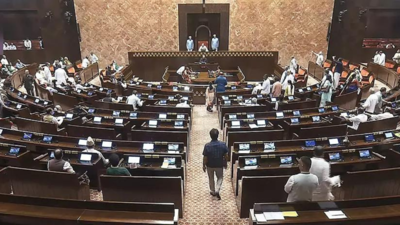
Indian students are vanishing from America’s campuses—and it’s not just a blip. In July 2025, student visa arrivals to the US dropped 28% year-on-year to just under 79,000, marking the steepest monthly fall so far this year, according to the International Trade Administration (via Bloomberg). But the real gut punch lies in the breakdown: Arrivals from India fell a staggering 46%, while China, once the dominant source of foreign students, declined by 26%. When your top two source countries both head for the exits, the alarm bells aren’t just ringing—they’re blaring through every admissions and finance office from Boston to Berkeley.And the implications go far beyond lecture halls. An analysis of SEVIS and State Department data by JB International and NAFSA predicts a 30–40% drop in new international student enrolment this fall. The hit? Nearly $7 billion in lost community spending and over 60,000 jobs—gone. For context, in 2024, international students contributed $46 billion to the US economy and supported nearly 400,000 jobs, suggests a report from The PIE News.Indian students—known for enrolling in high-cost STEM programs—have been the financial spine of many US universities, especially mid-tier private colleges that rely on full-tuition-paying internationals to stay afloat. But visa hurdles, backlogs, rising rejections, and hostile immigration rhetoric have turned an already complex process into a gamble many families aren’t willing to take anymore.What’s driving the decline?At the heart of the decline lies a cascade of administrative tightening and rising anxieties. The U.S. State Department—under the Trump administration—hit pause on all new student (F, M) and exchange (J) visa interview scheduling starting May 27, 2025, citing a need to build in new vetting protocols. This freeze came smack in the middle of the summer application crucible and immediately slowed the flow of hopefuls. Then, in mid‑June, interviews officially resumed—but with a catch: mandatory, intensified social‑media screening. Applicants were now required to make all their social‑media accounts public and consent to full examination of their digital trail—including posts, comments, associations, and even deleted content.In effect, a perfect storm was engineered: A visa‑pause when thousands apply, then a rollback coupled with a surveillance of digital lives. For Indian students—many applying for high‑stakes STEM programs—this came during the apex of the admissions season. The result? Crippling uncertainty, cascading deferrals, and a mighty wedge in what had long been America’s most reliable recruitment funnel.International students: The quiet funders of their American classmatesFor years, American universities have quietly balanced their books using a financial sleight of hand: Offering steep tuition discounts to domestic students while charging international students full freight. The practice, long taken for granted, is now starting to crack.According to an annual study by the National Association of College and University Business Officers (NACUBO), the average institutional tuition discount rate for first-time, full-time undergraduates at private nonprofit colleges reached a record 56.3% in the 2024–25 academic year. For all undergraduates receiving institutional aid, the average discount was 51.4%. In practical terms, that means for every $1 billed in tuition, colleges gave back 56 cents in institutional grant aid to incoming freshmen—netting just $22,000 on a $50,000 sticker price.By contrast, international students rarely receive such aid. They pay far closer to the listed price and, in doing so, have long subsidised the cost of education for their American classmates. When this full-pay segment starts to shrink—as current visa data from July 2025 suggests—the fallout is not gradual, it’s immediate. Fewer international students doesn’t just mean fewer bodies on campus; it means a sharp and sudden drop in revenue at precisely the moment institutions are running out of other financial cushions.The result? Fewer scholarships, slashed services, larger class sizes, and fewer course offerings—for American students. When foreign tuition dollars vanish, the subsidy model collapses—and it’s the locals who feel the cut first.TOI Education is on WhatsApp now. Follow us here.







